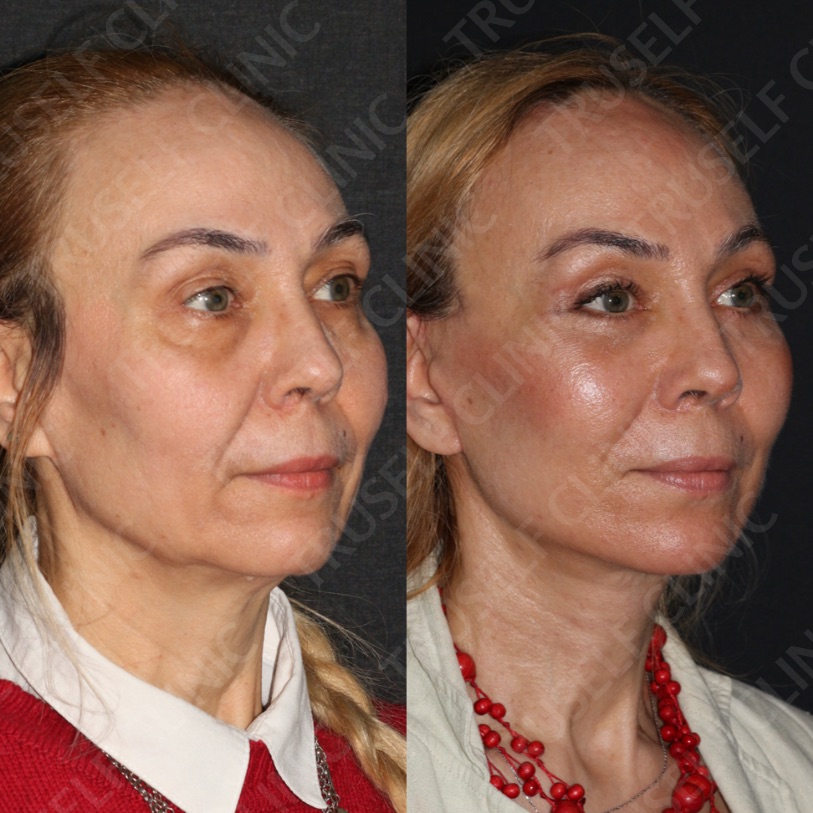What is a Deep Plane Facelift?

Aging is a natural process that brings about changes in our appearance, particularly in the face. As we age, the skin loses its elasticity, and underlying tissues and muscles begin to sag, leading to wrinkles, folds, and a less defined facial contour. For those seeking a more youthful and rejuvenated look, a deep plane facelift offers an advanced and effective solution. This blog post will explore what a deep plane facelift is, how it differs from other facelift techniques, the procedure, benefits, recovery, and potential risks.
What is a Deep Plane Facelift?
A deep plane facelift is a surgical procedure designed to lift and reposition the deeper layers of facial tissue, providing a more natural and long-lasting rejuvenation. Unlike traditional facelifts, which primarily tighten the skin, the deep plane facelift focuses on the deeper structures of the face, including the muscles and connective tissues. By addressing these foundational layers, the deep plane facelift achieves more substantial and enduring results.
How is it Different from Other Facelift Techniques?
-
Traditional Facelift: This technique involves lifting and tightening the skin and the superficial musculoaponeurotic system (SMAS), a layer of tissue beneath the skin. While effective, it primarily addresses surface-level concerns and may not provide as natural or long-lasting results as the deep plane approach.
-
SMAS Facelift: This technique focuses on tightening the SMAS layer but does not delve into the deeper structures of the face. It offers better results than a traditional facelift but still falls short of the deep plane technique in terms of durability and natural appearance.
-
Deep Plane Facelift: The deep plane facelift goes beyond the SMAS layer to release and reposition the deeper tissues and muscles of the face. By lifting these foundational structures, this technique provides a more comprehensive rejuvenation that looks natural and lasts longer.
The Deep Plane Facelift Procedure
-
Consultation: Your journey begins with a thorough consultation with our qualified facial plastic surgeon. During this session, the surgeon will assess your facial structure, discuss your aesthetic goals, and determine if a deep plane facelift is suitable for you.
-
Anesthesia: The procedure is typically performed under general anesthesia or deep sedation to ensure your comfort throughout the surgery.
-
Incisions: Incisions are made around the hairline, starting at the temples, continuing around the ear, and ending in the lower scalp. These incisions are strategically placed to minimize visible scarring.
-
Tissue Repositioning: The deeper layers of tissue, including the muscles and connective tissues, are carefully lifted and repositioned. This step is crucial for achieving natural-looking and long-lasting results.
-
Skin Redraping: After the deeper structures are repositioned, the skin is gently redraped over the new contours, and any excess skin is removed.
-
Closure: The incisions are closed with sutures or staples, and bandages may be applied to protect the area and reduce swelling.
Benefits of a Deep Plane Facelift
-
Natural Results: By addressing the deeper structures of the face, the deep plane facelift provides a natural and youthful appearance without the "pulled" look often associated with traditional facelifts.
-
Long-Lasting Effects: The comprehensive approach of lifting and repositioning deeper tissues ensures more durable results compared to other facelift techniques.
-
Improved Facial Contours: The procedure enhances the definition of the jawline, cheeks, and neck, providing a more harmonious and youthful facial contour.
-
Minimal Visible Scarring: The strategically placed incisions around the hairline and ears minimize visible scarring, allowing for a discreet recovery.
Recovery and Aftercare
-
Immediate Post-Procedure: You may experience swelling, bruising, and discomfort in the initial days following surgery. Pain medication and cold compresses can help manage these symptoms.
-
Activity Restrictions: It's important to avoid strenuous activities and heavy lifting for several weeks to allow for proper healing.
-
Follow-Up Appointments: Regular follow-up appointments with your surgeon will ensure that your recovery is progressing well and address any concerns you may have.
-
Final Results: While initial swelling may obscure the final results, you can expect to see the full benefits of the deep plane facelift within a few months as the swelling subsides and the tissues settle.
Potential Risks and Considerations
-
Infection: As with any surgical procedure, there is a risk of infection. Proper aftercare and hygiene can help minimize this risk.
-
Nerve Injury: Although rare, there is a potential for temporary or permanent nerve injury, which can affect facial movement or sensation.
-
Scarring: While efforts are made to minimize visible scarring, individual healing processes vary, and some scarring may occur.
-
Hematoma: The accumulation of blood under the skin, known as a hematoma, is a possible complication that may require additional treatment.
A deep plane facelift offers a sophisticated and effective solution for those seeking to rejuvenate their appearance and achieve a natural, youthful look. By addressing the deeper structures of the face, this technique provides long-lasting results that enhance facial contours and restore confidence. If you're considering a deep plane facelift, consult with our qualified facial plastic surgeon to discuss your options and embark on your journey to a refreshed and revitalized appearance.





